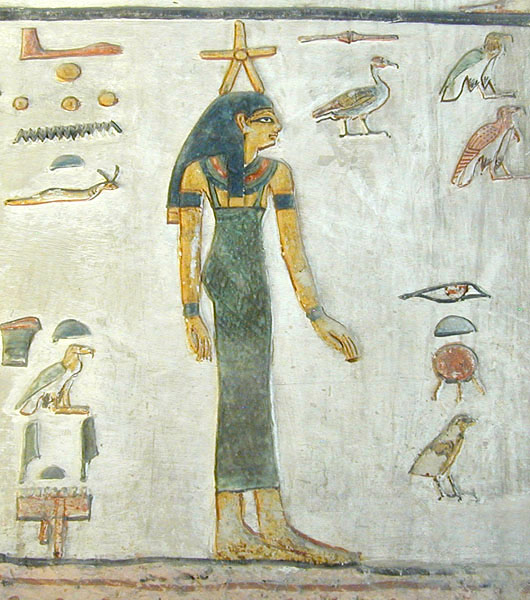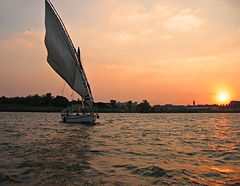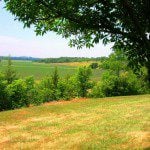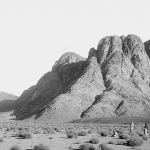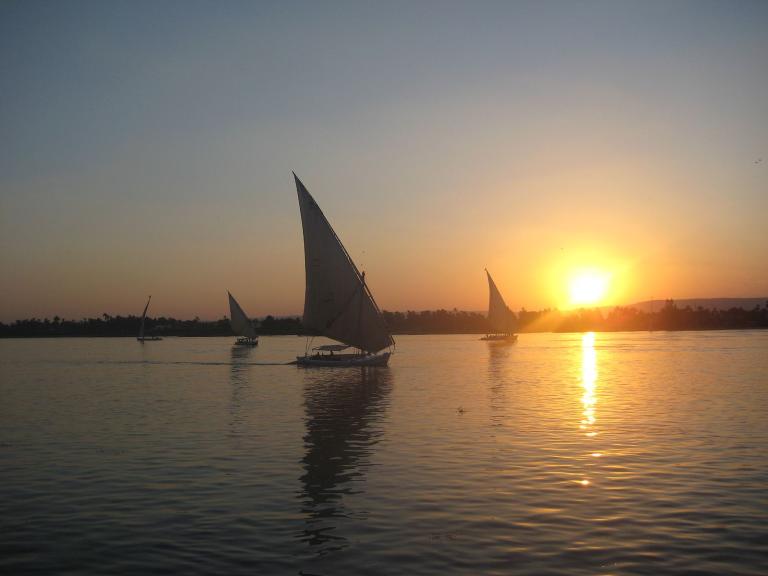
It has been suggested that I re-post the following, since the available places on the tour are evidently going fast. And, frankly, the Nile cruise ship that we want to use has limited space; if we don’t claim it, somebody else will. So, if there is anybody out there who’s thinking about signing up for this trip to Egypt, it may be vitally important to get on the list as soon as possible:
From 26 December 2018 through 5 January 2019, I’ll be accompanying a tour of Egypt to which you’re invited.
Face it: If you’re at all like me — it was actually much, much worse when I was a little kid — after all the anticipation of Christmas morning, Christmas afternoon and the next several days were a real let-down. Here’s something, though, that will pick you up!
And, moreover, December and January are beautiful times to visit Egypt. The temperatures are very, very pleasant.
Another factor to consider: Also accompanying the group will be Hany Tawfik, arguably the foremost tour guide in Egypt. (It was he who was chosen to take President Obama and Secretary of State Clinton around during their official visit to the country.) This will be my fourth tour with Hany. He’s very, very good.
Here’s a rough itinerary for what the Cruise Lady company is billing as “Ultimate Egypt”:
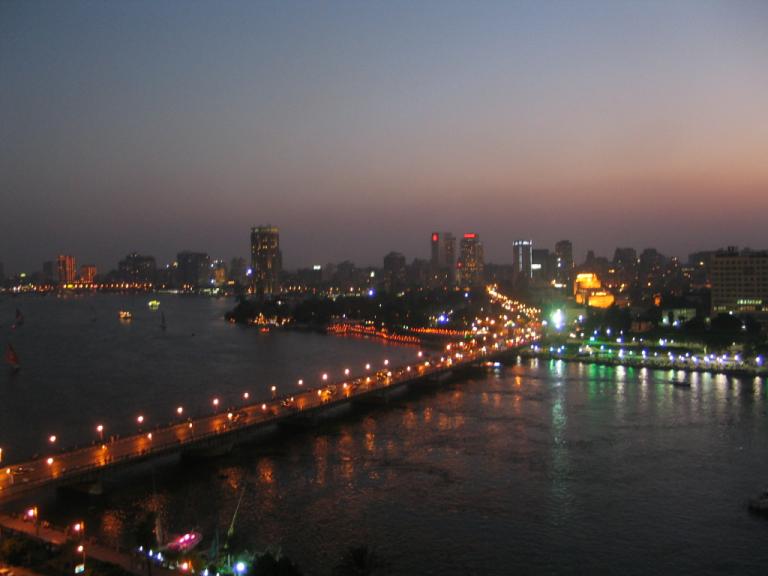
(Wikimedia Commons public domain)
We fly on Day 1 and arrive on Day 2, spending the night in Cairo, the largest city in Africa and the largest in the Arab world.
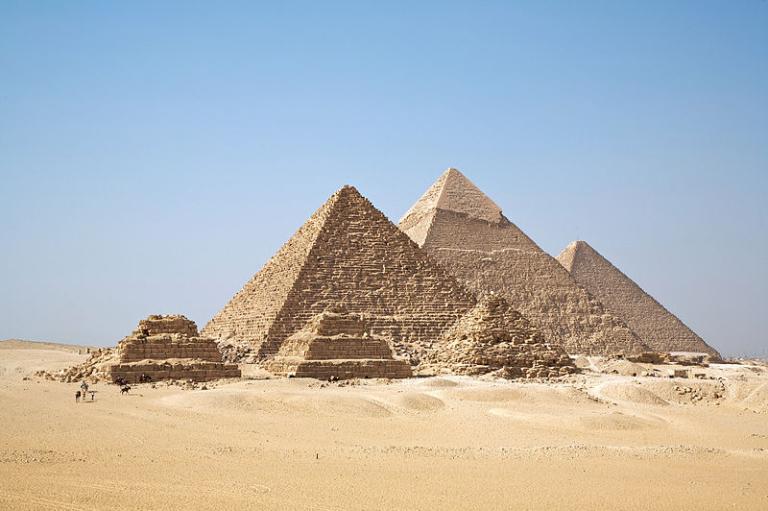
(Wikimedia Commons)
On Day 3, we go out to visit the great pyramids on the Giza plateau as well as the Sphinx, and, for those who want to do so, we enjoy a camel ride. Then we visit the solar boat museum, directly adjacent to the Great Pyramid of Khufu or Cheops. We then go to the Papyrus Institute (which will include some shopping) and to the astonishing Egyptian Museum, which makes the Egyptian collections at the Louvre and New York’s Metropolitan Museum look truly poor and pathetic. We’ll pay special attention to the relics of King Tutankhamen.
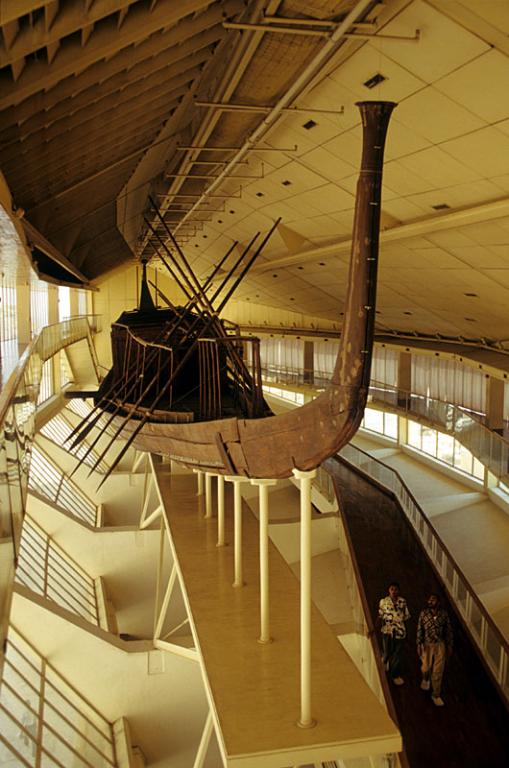
(Wikimedia Commons photo by Roland Unger)
On Day 4, we fly to Luxor, where we’ll visit the Valley of the Kings. We’ll enter three of the spectacular pharaonic tombs there, and those who wish to do so can also go into King Tut’s famous tomb. We’ll have a look at the magnificent temple of the female pharaoh, Queen Hatshepsut, as well as the famed Colossi of Memnon. That evening, there will be optional 2-hour horse cart tour through the city of Luxor, which I highly, highly recommend. (Both times I’ve done it, members of our tour have been surprised at how fascinating and enjoyable it was.) And, starting on Day 4, we spend our evenings aboard a Nile cruise ship, from which we’ll see Egypt the way the ancient pharaohs did, by boat. But we’ll do it in far more comfort than they ever dreamed possible.
On Day 5, we visit the grand Karnak Temple — the largest complex of religious structures ever built — which was dedicated to the god Amon, his wife Mut, and their son, Khonsu. Some Latter-day Saints will find certain temple images of particular interest. We’ll also visit the Luxor Temle, and then board our boat to sail southwards, up the Nile. Among other things, we’ll transit through the lock at Esna, which is fascinating to watch.
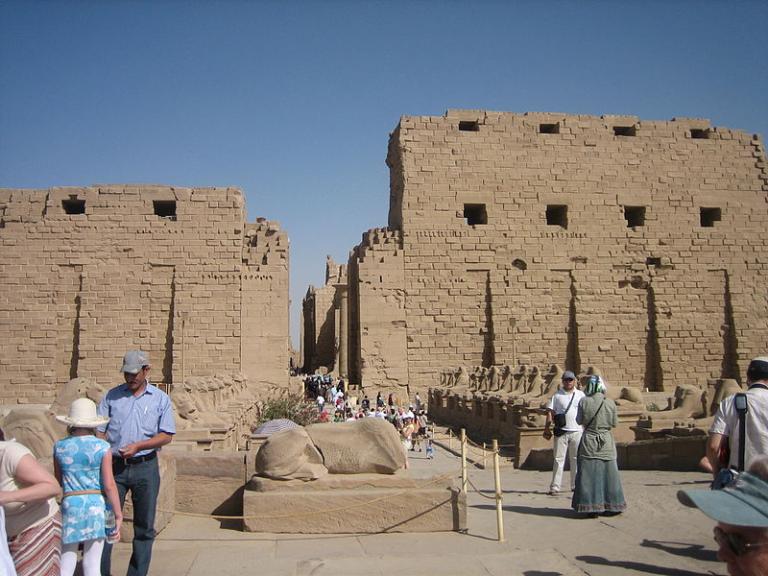
In the morning, on Day 6, we’ll stop at Edfu, where the most complete temple in Egypt stands. Returning to the ship, we’ll sail to Kom Ombo, docking right in front of the only double temple in Egypt, dedicated to both Horus the falcon and Sobek the crocodile. We’ll have a devotional onboard in the afternoon.
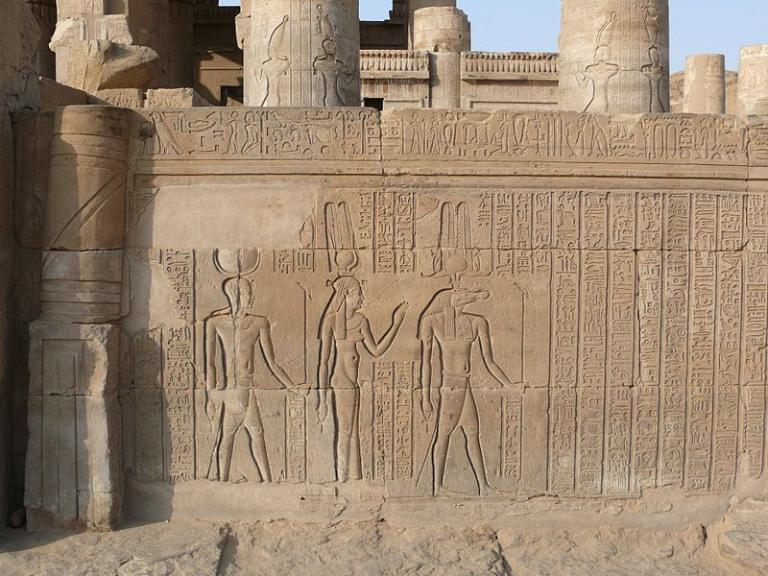
We arrive in the morning of Day 7 at Aswan, where we immediately visit the High Dam that was (controversially) built by the Soviets to control the annual Nile flood and to generate electrical power for a growing Egyptian populace and its expanding industry. Then we travel about ten minutes by motor boat over to one of the most beautiful temples in Egypt, the Temple of Philae, sacred to the goddess Isis. In the afternoon, we take another trip by boat to a Nubian village, where, among other things, we have an opportunity to have our pictures taken holding an adorable crocodile. On that boat trip, we’ll pass by Elephantine Island, in connection with which there’s an important point to be made with respect to the Book of Mormon.
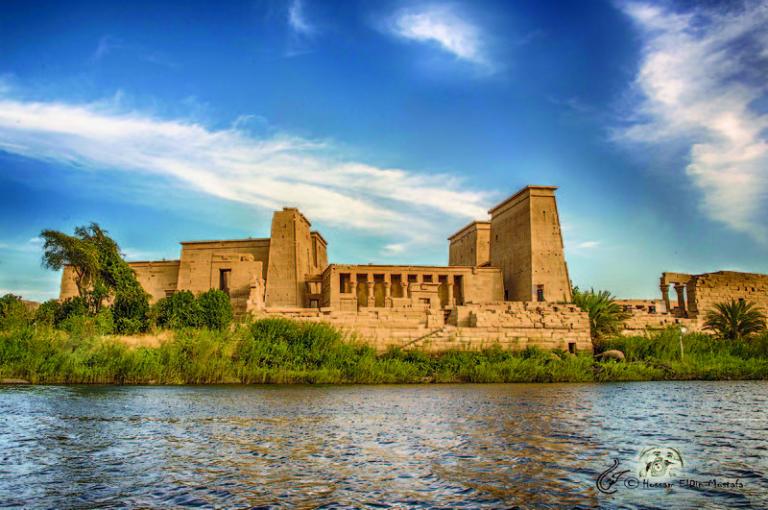
On Day 8, we fly to Abu Simbel to visit the famous temple of Pharaoh Ramses II (“the Great”). It’s the one, you may recall, that was dismantled and moved to avoid the rising waters of Lake Nasser after the construction of the Aswan High Dam. Then we fly back to Cairo.
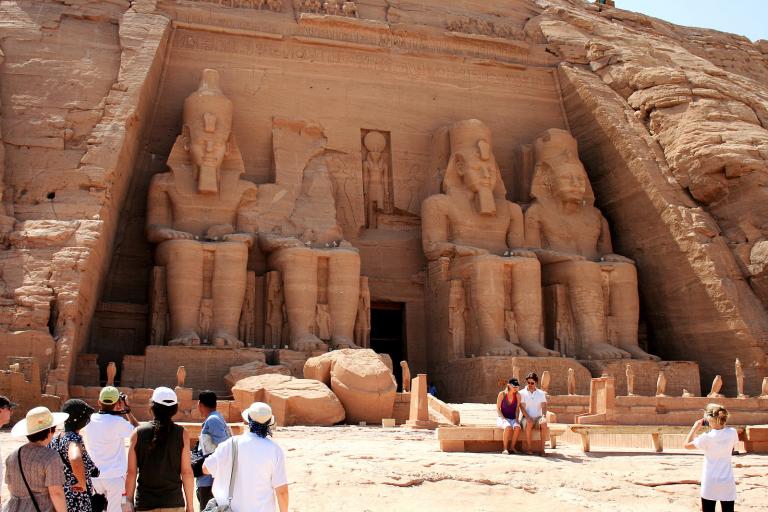
(Wikimedia Commons public domain)
On Day 9, we visit Saqqara, where stands the oldest Egyptian pyramid — which is also, arguably, the oldest stone building in the world. (If possible, we’ll also enter briefly into the Pyramid of Unas, where the famed “Pyramid Texts” were discovered. It’s often closed, but we were able to go into it a few weeks ago for the first time in many years.) Next, we proceed to the ruins of the Old Kingdom capital of Memphis, visiting the ruins of the Temple of Ptah and the gigantic Colossus of King Ramses II. At a local carpet school, we watch the children learning to make rugs from the cocoon of the silkworms and learn about the different kinds of Egyptian carpets and, if the mood hits us, we buy.
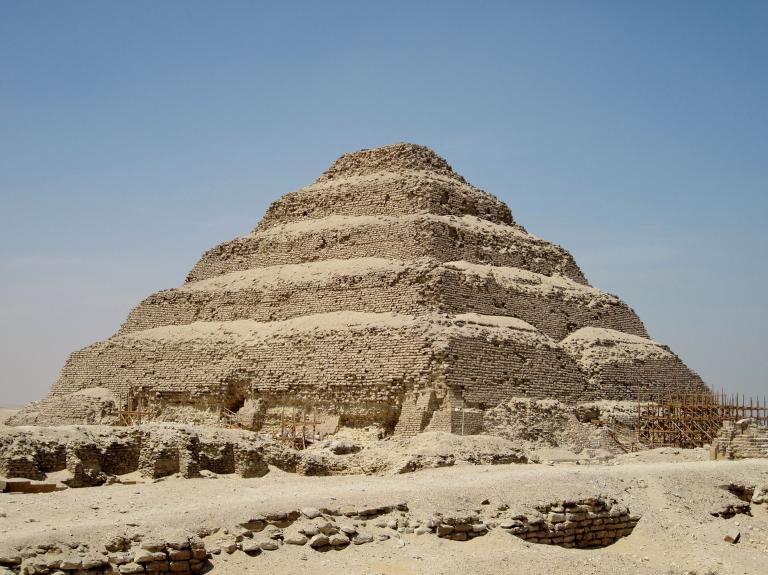
(Wikimedia Commons public domain)
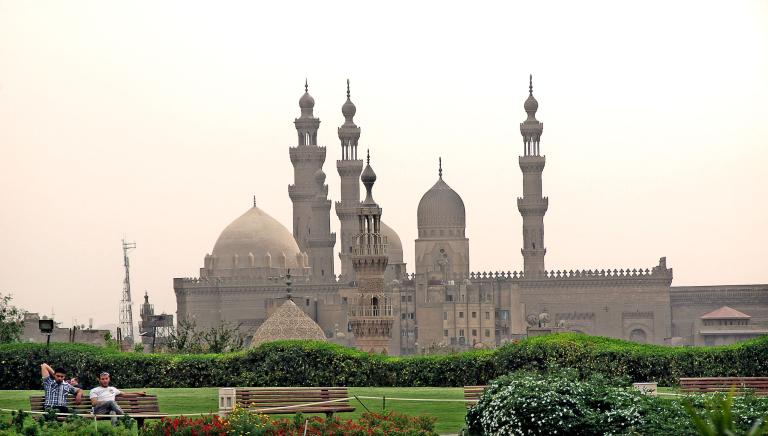
On Day 10, we visit Old Cairo (Coptic Cairo), including the Church of St. Sergius and Bacchus where Christian legend says that the Virgin Mary, Joseph, and the infant Jesus sheltered during King Herod’s massacre of male babies. Further into the quarter, we come to the Ben Ezra Synagogue, which is said to be built near the spot where the baby Moses was found in the reeds — and which is definitely the site of one of the most important manuscript discoveries of modern times. In the afternoon, we visit the enormous mosques of Sultan Hassan and Sultan Rifai. And we then end our tour of Egypt with a felluca ride on the Nile.
For those who are interested in Egypt but who cannot come in December, I’ll be accompanying another, somewhat shorter, tour of Egypt from 9 May 2019 through 16 May 2o19:


